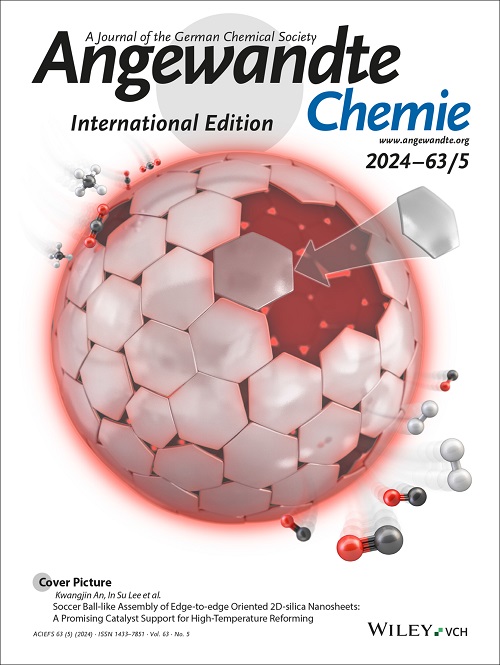Synergistic Regulation of Multi‐interface Chemistry by Functional Carbon Dots for High‐Performance Composite Solid Electrolytes
IF 16.1
1区 化学
Q1 CHEMISTRY, MULTIDISCIPLINARY
引用次数: 0
Abstract
Low ionic conductivity, poor mechanical strength and unstable interface structure are still the main factors hindering the practical application of polymer solid‐state lithium metal batteries (SSLMBs). In this work, we have developed a unique composite filler (LLZTOCDs) for solid polymer electrolytes to address these challenges through synergistic regulation of multi‐interface chemistry. The LLZTOCDs is prepared via thermal treatment of N, S, F‐codoped carbon dots (NSFCDs) and Li6.5La3Zr1.5Ta0.5O12 (LLZTO) inorganic electrolyte, here the detrimental Li2CO3 on the LLZTO surface is converted into a fast ion‐conducting and an electron‐insulating interlayer of LiF and Li3N, and the carbon dots self‐assemble into a functional organophilic coating on the outermost layer, which acts as a bridge between the LLZTO and the polymer. This unique structure enhances the compatibility and ion‐exchange kinetics between the LLZTOCDs and the polymer, significantly improving the mechanical strength and Li+ transport. Additionally, the oxygen vacancies formed in‐situ at the LLZTOCDs interface provide an anion confinement effect, increasing lithium salt dissociation and enhancing the Li+ transference number to 0.85. Therefore, the solid battery constructed with LLZTOCDs exhibits excellent electrochemical stability, long‐cycle life, and high ionic conductivity (1.96 × 10−4 S cm‐1 at 25 °C), providing a feasible strategy for practical applications.求助全文
约1分钟内获得全文
求助全文
来源期刊
CiteScore
26.60
自引率
6.60%
发文量
3549
审稿时长
1.5 months
期刊介绍:
Angewandte Chemie, a journal of the German Chemical Society (GDCh), maintains a leading position among scholarly journals in general chemistry with an impressive Impact Factor of 16.6 (2022 Journal Citation Reports, Clarivate, 2023). Published weekly in a reader-friendly format, it features new articles almost every day. Established in 1887, Angewandte Chemie is a prominent chemistry journal, offering a dynamic blend of Review-type articles, Highlights, Communications, and Research Articles on a weekly basis, making it unique in the field.

 求助内容:
求助内容: 应助结果提醒方式:
应助结果提醒方式:


